Bomunjeong (보문정)
4.6 Km 30 2021-03-24
15, Cheonnyeonsupseo-ro, Andong-si, Gyeongsangbuk-do
+82-54-858-0022
It is a good place that offers the combination of grilled Deodeok root and Suyuk (boiled beef slices). This Korean dishes restaurant is located in Andong-si, Gyeongsangbuk-do. The representative menu is grilled boneless ribs.
Village Hahoe à Andong [Patrimoine Mondial de l'UNESCO] (안동 하회마을)
4.7 Km 18835 2023-07-10
Gyeongsangbuk-do, Andong-si, Pungcheon-myeon, Hahoe-ri 1176-1
+82-54-853-0103
Le village Hahoe désigne historiquement le foyer des descendants du clan Ryu de Pungsan, le site est célèbre pour ses maisons traditionnelles. Lieu de naissance d’illustres lettrés de la période Joseon tels que Ryu Un-Ryong et Seoae Ryu Seong-Ryong, le village devint encore plus célèbre apres que la Reine Elizabeth II l’ait visité le 21 avril 1999.
Le village Hahoe (que l’on peut traduire par « Village Enveloppé d’Eau ») tire son nom du fleuve Nakdong, qui passe autour de son périmètre. Il est situé au contrefort de la montagne Hwasan, adjacente à la montagne Taebaek qui s’élève à l’est. Le centre du village est peuplé de larges maisons aux toitures en tuiles appartenant au clan Ryu, ajoutant leur charme unique aux toits de chaumes environnants.
Le village se distingue également par see charmantes vues pittoresques : l’élégant fleuve Nakdong passant autour du village, la magnifique falaise Buyongdae, des plages de sable ainsi que des pins anciens luxuriants. Les visiteurs peuvent prendre le bateau pour la falaise afin d'apprécier une vue panoramique du village.
En plus de paysages, le village propose des mets locaux raffinés. Il est possible notamment de déguster le Soju d’Andong, le Heotjesabap (type de bibimbap mangé par les nobles), le Gangodeungeo d’Andong (maquereau salé) ou encore le Guksu d’Andong (genre de plat à base de nouilles).
Les attractions à proximité incleunt les structures suivantes : le temple Bongjeongsa (érigé pendant la période Silla), la montagne Waryongsan, Gosan Seowon (une académie confucéenne), Gwiraejeong ainsi que les forêts de loisirs des montagnes Gyemyeongsan et Hakgasan.
Tout comme le village Yangdong à Gyeongju, le village Hahoe fut ajouté à la liste du Patrimoine Mondial de l’Humanité de l’UNESCO dans la catégorie « Villages Historiques de Corée » le 31 juillet 2010.
Bukchondeak [Korea Quality] / 하회 북촌댁 [한국관광 품질인증]
4.7 Km 115761 2020-09-08
7, Hahoebukchon-gil, Pungcheon-myeon, Andong-si, Gyeongsangbuk-do
+82-54-853-2110, +82-10-2228-1786
Located in Hahoe-ri (Pungcheon-myeon, Andong-si, Gyeongsangbuk-do), Hahoe Bukchondaek House is a hanok stay that was originally built by a civil official named Ryu Sa-chun in 1797 (the 21st year of the reign of King Jeongjo of the Joseon dynasty). It consists of a small sarangchae (men’s quarters) with two wing buildings at sides. As the anchae (women’s quarters), large sarang, daemungan (gate building), and shrine were built by Ryu’s great-grandson, Ryu Do-seong (who served as a governor of Gyeongsang-do), in 1862 (the 13th year of the reign of King Cheoljong), the house displays the typical features of a Joseon nobleman’s house and is the largest in Hahoe. The large sarangbang, Bukchonyugeo (measuring 7-kan* at the front, 3-kan at the sides), consists of two 2-kan rooms, two 1-kan rooms, a 4-kan daecheong (wooden floor), a 3-kan numaru (upper floor), a 3-kan kitchen, a 3-kan garret, a 5-kan toe (the narrow wooden veranda running along the outside of the building), and a jjokmaru (narrow wooden veranda). The entire building can be converted into a single space simply by opening the sliding doors between the rooms and the doors between the rooms and the daecheong. The medium-sized sarang, Hwagyeongdang, consists of a 2-kan room, a 1-kan daecheong, a 3-kan toe, and a jjokmaru, while the small sarang, Susinwa, consists of a 1-kan room, a 1-kan daecheong, and a 2-kan toe. The anchae has a courtyard in the middle, a kitchen, a main room, a daecheong, a gobang (storeroom), a witsangbang (upper room), a toenmaru (a narrow wooden porch running along the outside of the building), an araetsangbang, a jungmun that links to the large sarang, an araetgwang (storeroom), a dwiju (grain-chest), and a munganbang (gate building room). The munganchae (gate building) and shrine are also situated within the grounds of the house, along with a 300-year-old pine tree that is known for its curved shape, which is said to resemble the Nakdonggang River as it meanders around the village of Hahoe. The house contains valuable cultural heritages including Doseongpaldojido (Map of the Eight Provinces of Korea), which is estimated to date from the seventeenth century, and is regarded as an invaluable historic material as it includes Dokdo Island and Jiandao as part of the Korean territory, and a painting titled ‘Sehwa,’ which is believed to have been given to Ryu Yi-jwa (pen-name: Hakseo, 1763-1837) by the king as a New Year’s present. Bukchondaek House was built by one of the richest families in Hahoe, who are well known for their generosity as they have helped local people on many occasions throughout history. *kan: a unit of measurement referring to the distance between two columns.
Maison Ogyeonjeongsa (하회옥연정사)
4.7 Km 4658 2017-05-24
86, Gwangdeoksolbat-gil, Pungcheon-myeon, Andong-si, Gyeongsangbuk-do
La Maison Ogyeonjeongsa, située au pied de la falaise Buyongdae dans le village de Hahoe à Andong, a été construite par Ryu Seong-yong, qui fut ministre durant la période Joseon. Sa construction a débuté en 1576 (9ème année du règne du roi Seonjo) et s’est achevée en 1586 (19ème année du règne du roi Seonjo). C’est dans cette maison que furent écrites les mémoires de guerre « Jingbirok » après l’Imjinwaeran, l’invasion de la Corée par le Japon en 1592. Pour vous rendre à la maison Ogyeonjeongsa, il vous faut traverser la rivière en ferry. En dépit de l’apparence modeste de la demeure, la beauté sans prétention de cette maison coréenne se fond parfaitement dans le magnifique cadre naturel des falaises, de la rivière et de la forêt.
* Ecole Sesimjae
Cette école privée est dotée en son centre d’un plancher en bois Gamrokheon, flanqué de chambres de chaque côté.
* Maison Wolnakjae
Wolnakjae signfie « attendre un ami ». C’est dans cette maison que le ministre Ryu Seong-yong a écrit ses mémoires de guerre Jingbirok.
* Centre d’activités
Sesimjae (deux chambres de quatre personnes maximum chacune, plancher en bois Gamrokheon)
Wolnakjae (une chambre pour huit personnes maximum, plancher en bois Aeoheon)
Okyeon pavilion [Korea Quality] / 옥연정사 [한국관광 품질인증]
4.7 Km 13101 2023-04-13
86, Gwangdeoksolbat-gil Pungcheon-myeon, Andong-si, Gyeongsangbuk-do
+82-54-854-2202 / +82-10-4520-3640
Ogyeonjeongsa House was established by Ryu Seong-yong (pen-name: Seoae, 1542-1607), a minister of Joseon, with the help of Buddhist monk Tanhong, as a place to study and educate his students. After building Wonjijeongsa House, Ryu wanted to build another house at the foot of Buyongdae Cliff amid a tranquil environment away from the village, but due to his financial situation he was unable to complete the building by himself. Then, the monk Tanhong helped him build Ogyeonjeongsa House, which took ten years (1576 to 1586) to complete, when Ryu was 45 years old. Later, Ryu Seong-yong was able to share warmth with his brother (Gyeomam), who lived in nearby Gyeomamjeongsa House. Ryu later lost his house in Hahoe in the great flood of the Nakdonggang River in 1605, and retired to Ogyeongjeongsa House where he wrote Jingbirok (The Book of Correction, National Treasure 132), a memoir of the Imjin War (Japanese Invasion of Korea in 1592). The house’s guestrooms include Sesimjae (meaning ‘having a mind to this place to achieve at least one in ten thousand things,’ inspired by the I Ching or The Book of Changes), which was used by Ryu as a schoolhouse and has two small rooms between the maru gamheonrok (wooden floor, meaning ‘looking up at the sky and down at the blue water,’ inspired by Wang Xizhi’s poetic diction); Wonlakjae (meaning ‘waiting for a friend’s visit,’ inspired by the Analects of Confucius), in which Ryu himself resided and wrote Jingbirok; and the maru aeoheon (meaning ‘I also love my hut,’ taken from a poem by Chinese poet Tao Yuanming), which measures two kan (a unit of measurement referring to the distance between two columns).
Falaise de Buyongdae (부용대)
4.7 Km 3576 2021-05-25
72, Gwangdeoksolbat-gil, Pungcheon-myeon, Andong-si, Gyeongsangbuk-do
+82-54-852-6800
La falaise de Buyongdae mesure 64 mètres de haut et se situe à l’extrêmité de la chaîne de montagnes Taebaek. Le sommet offre une vue panoramique du village de Hahoe à Andong. Son nom vient d’une ancienne histoire chinoise. Le nom de Buyongdae, qui signifie lotus, lui aurait été donné à cause de la configuration du village de Hahoe en forme de fleur de lotus. Par conséquant, c’est depuis la falaise que l’on a la meilleure vue de Hahoe. A proximité de Buyongdae se trouve la maisone de Ogyeonjeongsa, la maison de Gyeomamjeongsa et l’académie de Hwacheon Seowon.
Jeongseong Damuen Bapjip Yul(정성담은밥집율)
4.7 Km 40 2021-04-10
32-16, Pungyo 3-gil, Andong-si, Gyeongsangbuk-do
+82-54-843-5573
This is a place where you can enjoy various duck dishes that are good for the health. This Korean dishes restaurant is located in Andong-si, Gyeongsangbuk-do. The most famous menu is rich soybean paste stew.
Ttoraeorae Docheng(또래오래 도청)
4.7 Km 46 2020-11-27
7-19 Cheonnyeonsupseo-ro Andong-si Gyeongsangbuk-do
+82-54-822-9292
You can enjoy a variety of chicken dishes. This Korean dishes restaurant is located in Andong-si, Gyeongsangbuk-do. The most famous menu is fried chicken.
Kokkiri Sikdang (코끼리식당)
4.7 Km 92 2021-03-26
7-19, Cheonnyeonsupseo-ro, Andong-si, Gyeongsangbuk-do
+82-54-854-9889
It is a place where you can enjoy various Korean dishes. This Korean dishes restaurant is located in Andong-si, Gyeongsangbuk-do. The most famous menu is grilled pork belly.
Geochang Galbi - Docheong Branch (거창갈비 도청)
4.8 Km 75 2021-03-26
48-14, Pungyo 3-gil, Andong-si, Gyeongsangbuk-do
+82-54-843-0099
It is a place where you can enjoy Korean BBQ. This restaurant's signature menu is grilled Korean beef ribs. This Korean dishes restaurant is located in Andong-si, Gyeongsangbuk-do.
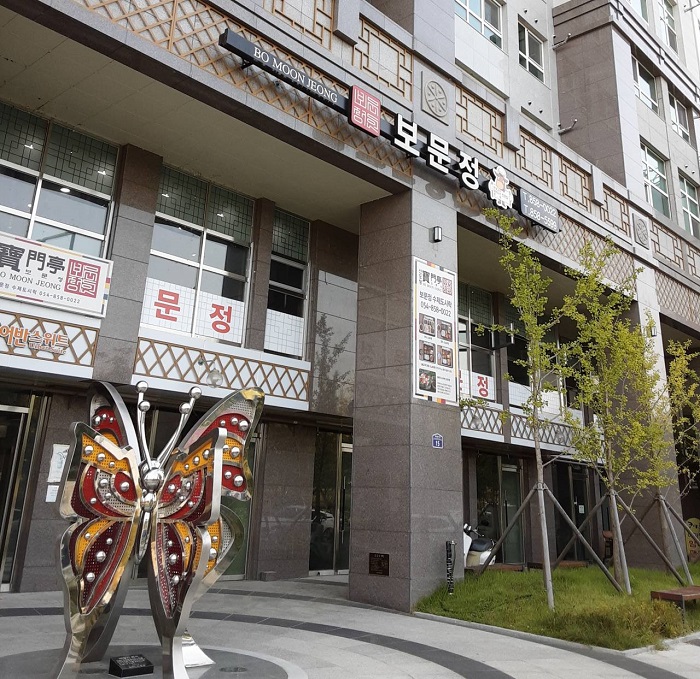

![Bukchondeak [Korea Quality] / 하회 북촌댁 [한국관광 품질인증]](http://tong.visitkorea.or.kr/cms/resource/74/2626274_image2_1.jpg)
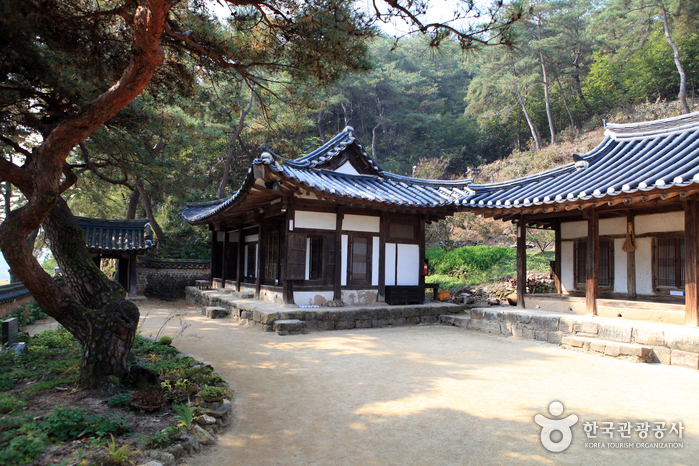
![Okyeon pavilion [Korea Quality] / 옥연정사 [한국관광 품질인증]](http://tong.visitkorea.or.kr/cms/resource/50/2578050_image2_1.jpg)
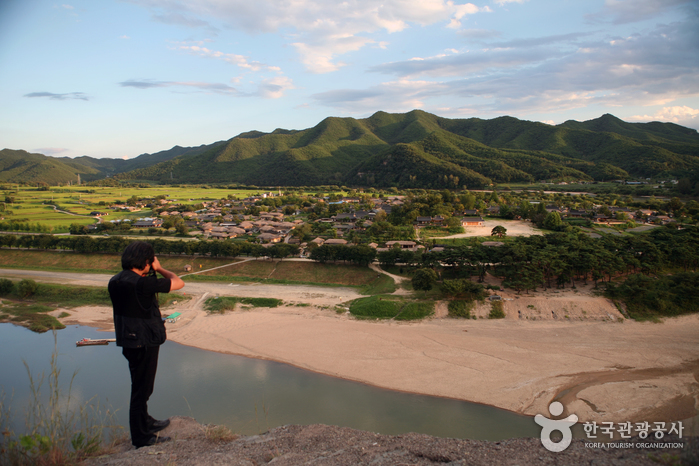
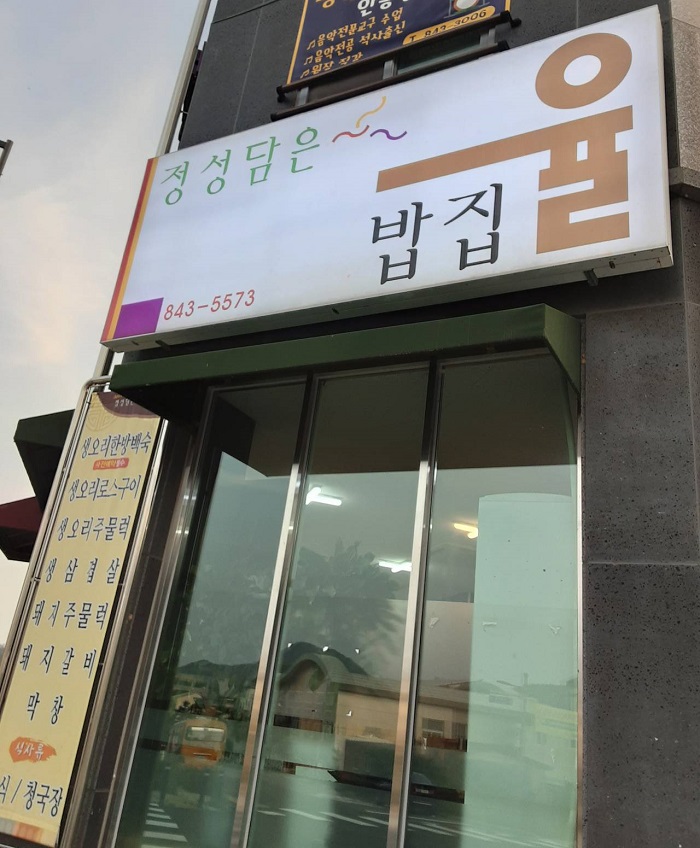
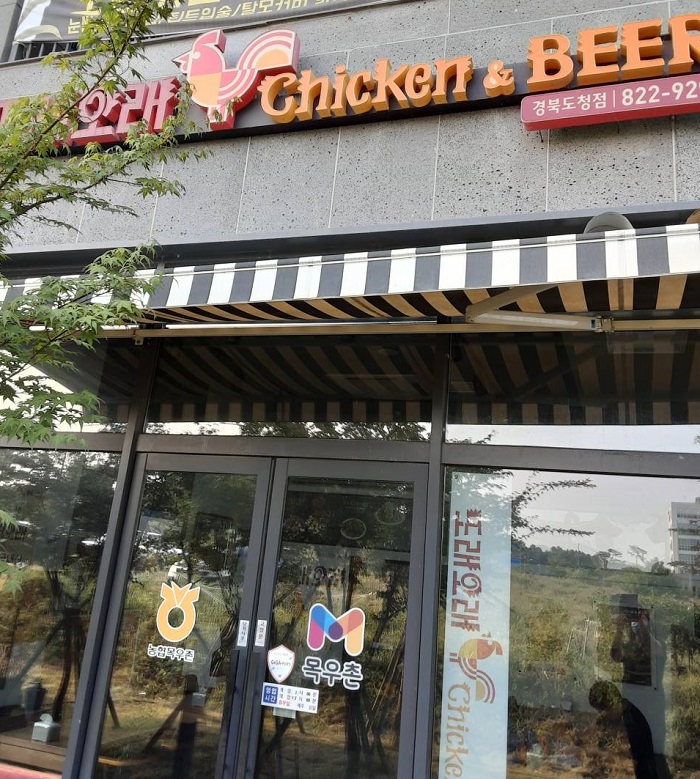
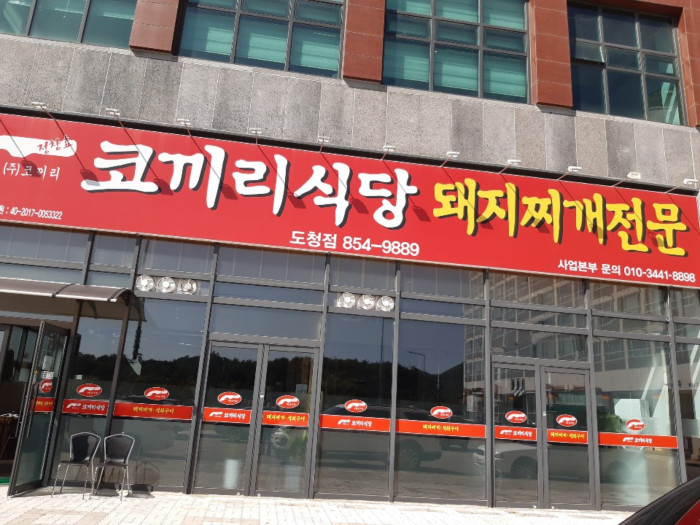
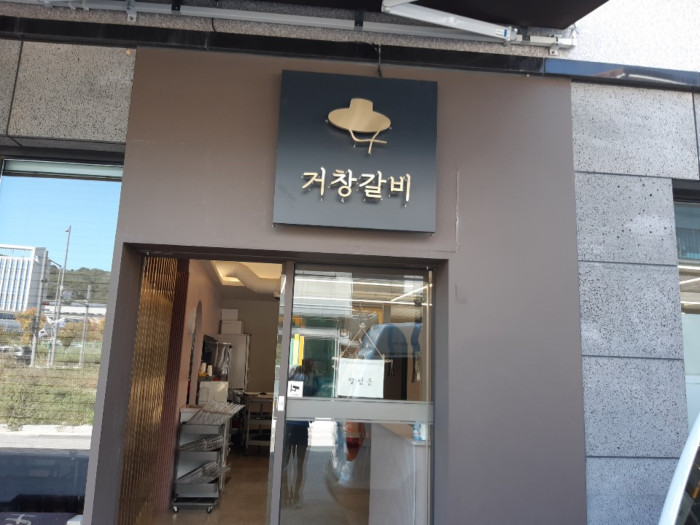
 Français
Français
 한국어
한국어 English
English 日本語
日本語 中文(简体)
中文(简体) Deutsch
Deutsch Español
Español Русский
Русский